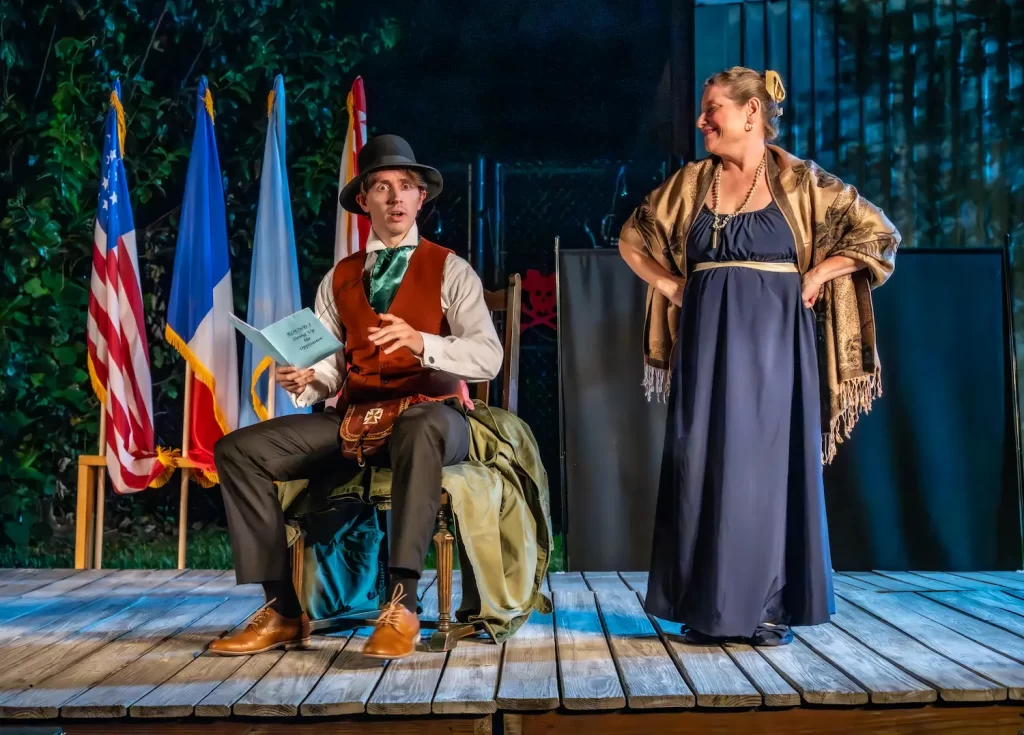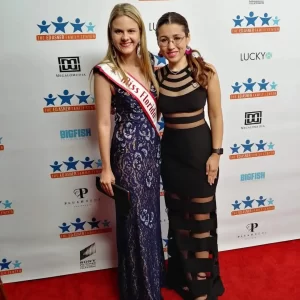Time-Travel with TWAM Video
by Ben Gunter and Idy Codington
Florida has been famous as a cultural crossroads for centuries. People from Indigenous, Black, Hispanic, French, and English heritages have all called Florida home. When Rachel Jackson, wife of Florida Territory’s first US governor, arrived in Pensacola in 1821 she wrote to her friend Elizabeth Kingsley that Florida possessed “perhaps a greater diversity of character, color, and physiognomy and withal a greater variety and confusion of tongues than any place of the same magnitude could boast of since the ancient days of Babylon. The inhabitants all speak Spanish and French. Some speak four or five languages. Such a mixed multitude, you, nor any of us, ever had an idea of.”
How can you experience Florida’s historic mix of cultures today? Through TWAM video. With support from the Florida Division of Historical Resources, Theater with a Mission (TWAM) has created 10 short, free, fascinating videos called “Tallahassee 200 Years Ago.”
Three videos in the series introduce you to Native American presence in Florida. These videos feature stories about how the cypress tree became evergreen and how the rabbit lost his tail, told by tasked traditional Muscogee storyteller Misty Penton and Cherokee storyteller Wayne Winding Eagle. Muscogee medicine maker Doug Alderson tells you about the medicinal uses of willow, Yuchi historian Dale Cox brings you face to face with Tallahassee’s chieftain Neamathla as he becomes a victim of Florida Territory’s Indian Removal policy in 1823, and dancers from Choctaw and Yamasee nations perform the racoon dance (an Indigenous courting ritual) and the chicken dance (a Native athletic contest).
Three more videos in the series immerse you in Black experience during Florida’s territorial times. You’ll hear how West African drumming and dancing came to Florida, re-created by Àyokà Afrikan Drum and Dance from Tallahassee and Kuumba Dancers & Drummers from Tampa. You’ll hear African griots from Essential Theatrical Associates tell stories called “Why the Sky Is Far Away” and “The People Could Fly.” You’ll learn how Black people brought medical, architectural, and governmental skills to Florida hundreds of years ago.
Another trio of videos in the series opens doors for exploring how 1820s Floridians had fun. You’ll learn songs that people sang while they worked and while they partied, you’ll hear toasts from public dinners that went down in history, and you’ll get a crash course in how to mix drinks that blend Spanish and British beverages. Best of all, you’ll witness highlights from lots of plays – plays from the Spanish Golden Age that TWAM has revived to show how Floridians had fun poking fun at social distinctions (like El retablo de las maravillas, Where Only the Pure See Miracles), questioning the status quo (like El Muerto, or Better Wed than Dead), and probing the motivations behind political power brokers (like The Habeas Corpus Fracas).
With three videos in the series focusing on Native Floridians’ history, three videos examining Black experience, and three videos diving into how people had fun in the 1820s, what is left for the tenth video to show you? Women! “Women in Florida 200 Years Ago” is hosted by characters who made history before historians proceeded to forget about them – women like La Fleur, queen of Pensacola’s social scene during territorial times, Florida White, the most successful politician in Florida Territory (her speeches got her husband John Mills White elected to Congress 6 times in a row), and Anna Jai Kingsley, who came to Florida enslaved, then became the Free Black owner of a plantation where people could earn the money to buy their own freedom.
All ten videos are open for you to see free at TheaterwithaMission.com. To launch your journey into Florida’s multicultural past, just log onto the website, click on “Tallahassee 200 Years Ago,” and choose a video. When the videos make you hungry to know more, visit the Bonus Features about Native presence, Black experience, how people had fun, and women which also posted on TWAM’s website. Happy Time Travel!


